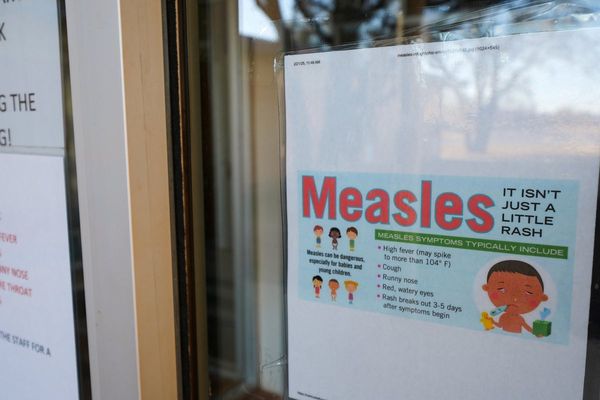
Dr Nick Scriven can pinpoint the exact day he realised the NHS could no longer cope. “I first noticed it when I was on call on New Year’s Day 2012. We ran out of beds in our hospital. As a result medical patients had to occupy the beds in a surgical ward meant for people with broken bones waiting to have planned orthopaedic surgery.
“We’d always had ‘outliers’, the occasional medical patient who’d ended up in a surgical bed. But this was the first time cases like that had ended up taking over almost all the 30 beds on the orthopaedic ward. This went on for a month and was a massive stress for everyone as we’d never had to cope with this amount of patients being looked after elsewhere before.
“I hoped it was an anomaly but sadly the same thing happened every year after that,” says Scriven, who works at a hospital in Yorkshire.
However, in his experience it was not until 2015 that the NHS went from struggling with just its usual “winter pressures” – a temporary overload in the cold months – to an “eternal winter”: the same difficulties but close to year-round. “This was evident in the number of ‘extra capacity’ beds opened across the NHS to relieve ‘winter pressures’ that were still open at Easter. This picture has continued to cause ever increasing concern and put pressure on staff and patients”, says Scriven, a former president of the Society for Acute Medicine. In other words, being overwhelmed became routine – a regular, predictable event – and has remained that way since.
He was talking about England. But the trajectory of the health service in Scotland, Wales and Northern Ireland has followed the same pattern of dramatic, relentless decline.

Scriven, a doctor for 32 years, says the NHS is in the worst state he has ever seen; it is in a “downward spiral”. “Care is in some respects dire. The target used to be to treat 95% of A&E patients within four hours. Now it’s just 76%. Patients face delays all year round that would have been unacceptable five to 10 years ago and until recently would have been reported to NHS England as an ‘adverse incident’. Unfortunately we are in the position where dire circumstances, such as ‘corridor care’, with the complete lack of privacy and dignity that people suffer while sat on a trolley waiting [to get a bed], have in fact been normalised.”
The chief executive of one acute hospital trust in England gives an even bleaker assessment as the NHS prepares to mark the 75th anniversary of its creation on Wednesday, which will include a service of thanksgiving for 2,200 staff and volunteers at Westminster Abbey. “It feels like we are locked into a death spiral. The challenges today are far greater than anything over the last 20 years,” they say.
“Waiting lists are incredibly long, with no viable solutions to reduce them. Morale is low. And people – both patients and staff – are frustrated, annoyed and angry. Financial pressures are mounting and with patients waiting far longer for their care and struggling to access care, it is likely harm is increasing. It feels like the NHS, on its 75th birthday, is in an utter mess.”
How did the country’s most important public service end up in such a sorry state? Labour’s Wes Streeting, the shadow health secretary, regularly points out that when his party was in government it “delivered the shortest waiting times and the highest patient satisfaction in history”.
While this is true, it would be wrong to suggest the NHS was in perfect shape under Labour. When it left office in May 2010 almost 2.6 million people were on the waiting list for hospital care and that total had been as high as 4.2 million. However, health experts point out that it took Labour time to get on top of the many problems in the NHS Tony Blair had inherited in May 1997, and that it needed years of sustained huge increases in the service’s budget and staffing to do that.
It is instructive to compare the performance of the NHS’s “referral to treatment” (RTT) programme – the longstanding aspiration to treat 92% of everyone on the treatment waiting list within 18 weeks and a key metric of judging its overall ability to cope with the many pressures it is under – when Labour lost power in May 2010 and now, after 13 years of Tory-led administrations.
When Gordon Brown left Downing Street the median wait for treatment under RTT was 5.5 weeks; today it is 14.1 weeks. While 2.6 million people were waiting then, today the figure is 7.33 million. Back then 92.1% of patients were seen within 18 weeks – the key 92% target was met – but NHS England’s last set of monthly performance statistics showed that now just 46% are seen within the target time.
Many international studies have found that the effective performance of any health system depends primarily on two things: the money it gets and the staff it has. Analysis by the Health Foundation think tank shows that the NHS got annual budget rises of 3% during Margaret Thatcher and John Major’s Tory governments between 1979 and 1997. Under Blair and Brown between 1997 and 2010, the average soared to 6.7%. But during the Tory-Liberal Democrat coalition in 2010-15 it plummeted to 1.1% as a result of the austerity imposed on the entire public sector. David Cameron and Theresa May’s subsequent administrations from 2015 to 2018 gave the NHS only a little more – 1.7%. Funding only recovered to the 4%-a-year average that health economists say is the minimum investment to maintain a high-performing system under Boris Johnson, Liz Truss and now Sunak.

The prime minister has made improving the NHS one of his five key priorities and surveys regularly remind him that it is an issue of acute concern to the public. But despite that, and despite the NHS having received an average annual increase to its income of 3.6% since its creation in 1948 and the service’s many visible problems – such as people dying of a heart attack or stroke because an ambulance took too long to reach them – the Health Foundation has found the service will receive a budget boost of just 1.2% this year.
On staffing, the picture under the Tories is just as sobering. In March 2010 the NHS had 21,351 empty posts – a vacancy rate of 2.1%. At the end of March this year that had risen to 112,498 vacancies – 8% of the total workforce. In 2010 the service was short of 2,113 doctors and dentists and 8,153 nurses and midwives. Today it needs 8,549 medical staff and 40,096 nurses. In January the Care Quality Commission reported how when its inspectors visited Colchester hospital in Essex, it was so understaffed that there were too few people on duty to help some patients with their breakfasts, answer call bells promptly or clear dirty dressings from bedsides. Last Friday the government unveiled a 15-year NHS long-term workforce plan, though the planned increases in numbers of doctors and nurses will take years to start producing new recruits.
Anita Charlesworth, the Health Foundation’s head of research, says the NHS’s sorry state is due to “a collision between rising demand over the long period, with the ageing population and people having more long-term health conditions, and medicine being able to do more, which is a positive thing, and constrained capacity, which was at least a decade in the making.” Covid’s arrival in early 2020 meant a system that was already “on the edge” of its ability to cope has since then in many ways fallen off a cliff, she says.
“What’s striking about the current situation is that, while previously individual NHS services have struggled, now it’s every area of the NHS which is struggling at the same time as the social care system is struggling and at the same time as a cost of living crisis. It’s the combination of those factors that makes this so challenging.”
She is particularly worried by several aspects of what she calls the NHS’s “managed decline”: the harm to patients who cannot get prompt care; that access to diagnostic tests such as a CT or MRI scan is too slow, delaying the start of treatment; and the fact that patients are struggling to get urgent and emergency care – to see a GP, start A&E treatment or get an ambulance after dialling 999 – not just to have planned surgery.
The evidence about patient harm caused by care delays is growing. The Royal College of Emergency Medicine, which represents A&E doctors, estimates that 23,000 people – 442 a week – died during 2022 as a direct result of having to wait too long in an emergency department. Similarly, Association of Ambulance Chief Executives data shows that last December 57,000 patients were put at risk because of delays in ambulance crews handing them over to A&E staff, of whom 6,000 were exposed to “severe harm” as a result.

Charlesworth denies that the NHS is slowly imploding. “I don’t think the NHS is failing. I think the NHS is being failed – failed by policy that is ineffective,” she says, referring to the neglect of the deepening workforce shortages, shortsighted approach to funding and failure to build hospitals and other new NHS buildings that have characterised all governments since 2010. The end result, she says, is that “we lack capacity. The gap between the pressures on the NHS and the resources available is as wide as it’s ever been.
“In human terms that means patients aren’t getting timely care and staff are suffering the moral injury of not being able to do what they’re trained to do. So by failing to invest in the capacity the NHS needs we’re failing patients, we’re failing staff and we’re failing the taxpayer, because a productive and efficient NHS is also really important for economic growth.”
In May Richard Taunt, a former deputy director at the Department of Health, published an essay setting out “the five reasons the NHS won’t live to see 100”. They included its highly centralised structures, a squeeze in the number of younger people available to become staff at a time when the ageing population is increasing demand, and the persistent mistake of treating illness but not preventing it.
Back at the NHS frontline, the trust chief executive is surprisingly positive about its future. They hope that the next government quietly dismantles the 42 new “integrated care systems” – regional groupings of NHS trusts, which work with local councils and voluntary organisations to improve care – which they see as “an expensive failure”; and that ministers can somehow end the very debilitating wave of NHS pay strikes.
“Whilst there are many reasons to feel anxious and the short-term future is almost certainly more challenging than the recent past, if we refocus on patient care and not just money, if we take difficult decisions and if we give people hope and belief, the NHS may survive to see its 100th birthday.”
Despite laying bare the NHS’s many problems, Charlesworth, too, is hopeful. “I’m profoundly optimistic about the NHS’s future. First, public commitment to the NHS remains absolutely rock solid. Second, all the evidence is that tearing up our tax-funded free-at-the-point-of-use model of healthcare and moving wholesale to another [type of] system wouldn’t deliver benefits to patients or the taxpayer. And third, we have the fundamental building blocks of an effective healthcare system: strong primary care, a good focus on public health and a great science base.
“But for the NHS to recover and survive and prosper, if we want a high-quality NHS, it has to be properly funded and have enough capacity. That is an enduring truth that no government should ignore.”







